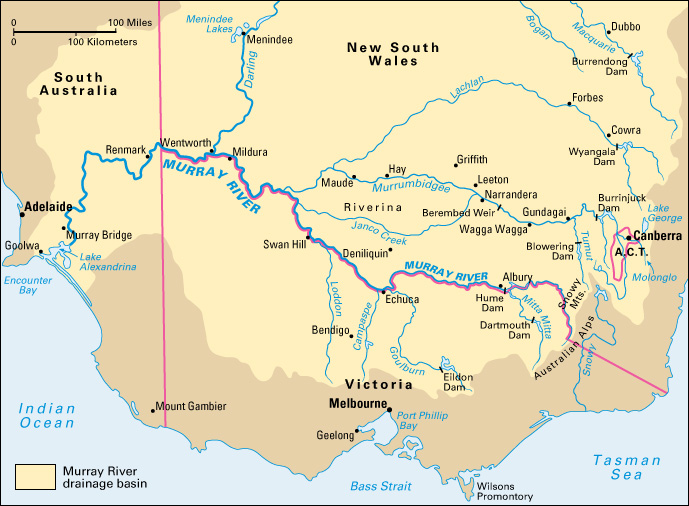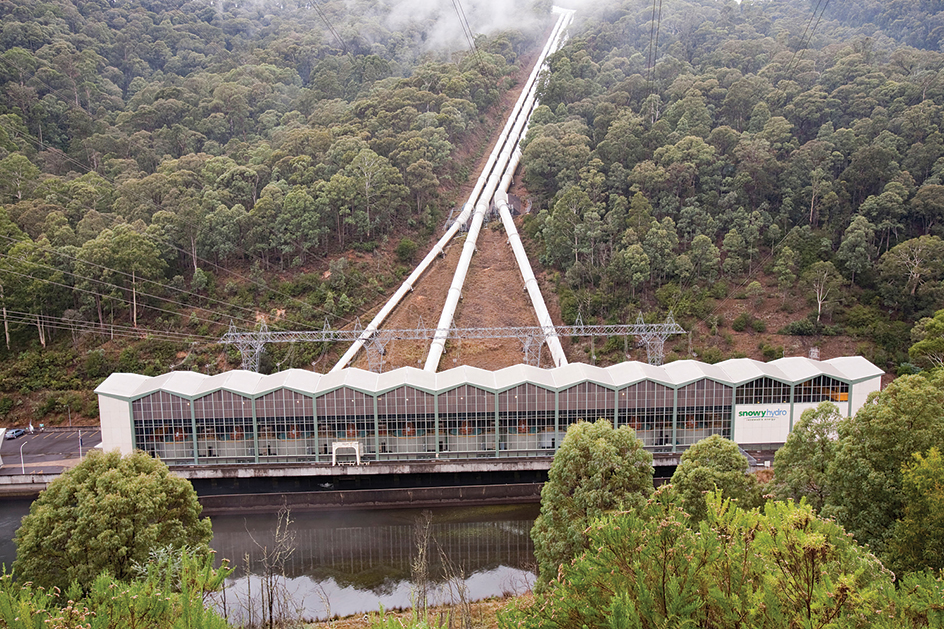Murrumbidgee River is the third longest river in Australia. It is about 923 miles (1,485 kilometers) in length. Only the Murray and Darling rivers are longer. The Murrumbidgee River forms part of the Murray-Darling river system. The Murrumbidgee begins in the Snowy Mountains in the state of New South Wales. It flows northward past Canberra, and then westward until it is joined by the Lachlan River west of the town of Hay. The Murrumbidgee then flows generally southwest and joins the Murray River at the New South Wales-Victoria state border.

Near its headwaters, the Murrumbidgee forms an important part of the Snowy Mountains Scheme, a hydroelectric-power and irrigation project. Water from the Snowy River and its tributaries is transferred through tunnels to the Murrumbidgee. In the winter, rain and snow supply large volumes of water. Dams store this water and use it to generate hydroelectric power. The water is also used to irrigate the Murray and Murrumbidgee river valleys during the dry spring, summer, and autumn periods. 
Aboriginal people have lived near the Murrumbidgee River for thousands of years. Aboriginal people are among the Indigenous (native), or First Nations, peoples of Australia. The river runs through the traditional lands of the Wiradjuri Aboriginal people, one of the largest Aboriginal groups in New South Wales. In the Wiradjuri language, Murrumbidgee means big flood or big water. In 1821, Charles Throsby became the first European settler to encounter the Murrumbidgee River. He came upon it near Tharwa, south of Canberra, while following directions given to him by Aboriginal people.
When Europeans began building settlements along the Murrumbidgee, local Wiradjuri people warned them that the river had a history of dangerous flooding. But the settlers ignored these warnings. On June 24, 1852, following a period of heavy rain, the Murrumbidgee overflowed. The flood killed at least 80 people—about a third of the population—in the rural community of Gundagai, New South Wales . It was one of the deadliest natural disasters in Australian history.
Water-conservation and irrigation projects on the Murrumbidgee date back to the 1850’s. At that time, squatters dammed floodwater streams and cut a canal to join the main stream and Yanco Creek. This project was completed in 1879. The New South Wales government started the Murrumbidgee Irrigation Area (MIA) project in 1906. This scheme first supplied water in 1913. The project initially established a few towns and villages with small, irrigated farms nearby to employ the residents. The project later was expanded to irrigate more distant, larger farms producing fruits and vegetables, cereals, dairy products, and crops for livestock.
